Barcelona’s Sagrada Familia is a masterpiece in progress, a stunning blend of architectural forms and a monument to Antoni Gaudí’s visionary creativity. It is a stunning combination of art, architecture, and spirituality. Although still under construction, this basilica has a unique design incorporating natural elements, religious symbolism, and architectural marvels. Let us explore the intriguing world of Sagrada Familia architecture and design.
Architectural Styles
The Sagrada Familia defies simple description. It incorporates aspects from several styles, most notably:
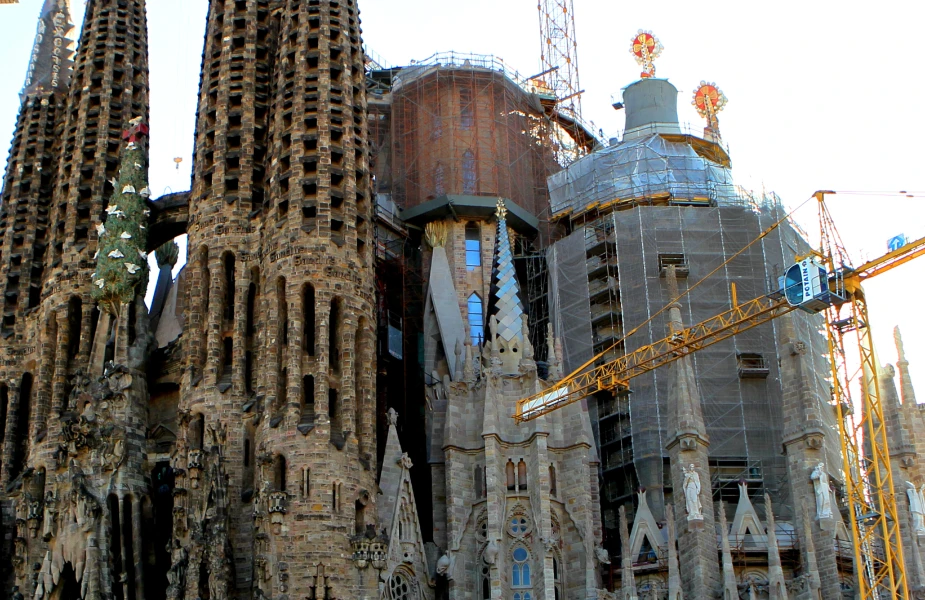
Catalan Modernism
Led by Gaudí, stressed local traditions and natural forms. The basilica’s curvy facade, brilliant colors, and rich details reflect this ideology.

Art Nouveau
The Sagrada Familia’s flowing columns, plant-like decorations, and stained glass windows reflect the Art Nouveau style, distinguished by flowing curves and natural elements.
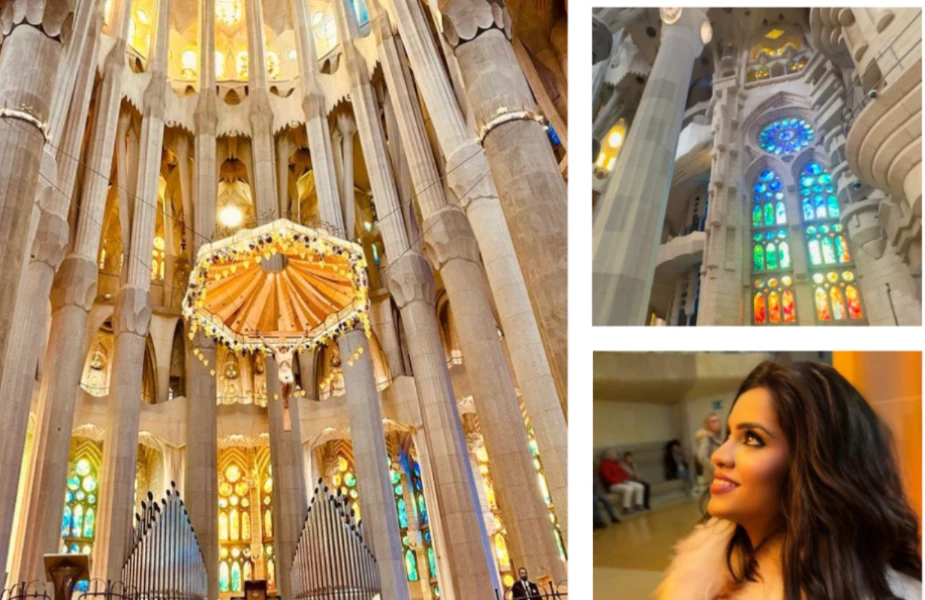
Neo-Gothic
The basilica retains Neo-Gothic characteristics, including spires, tracery, and buttresses, despite Gaudí’s considerable changes to the original design.
Nature’s Grandeur
Gaudí’s fascination with nature is evident throughout the Sagrada Familia. Here are a few major traits that demonstrate this:
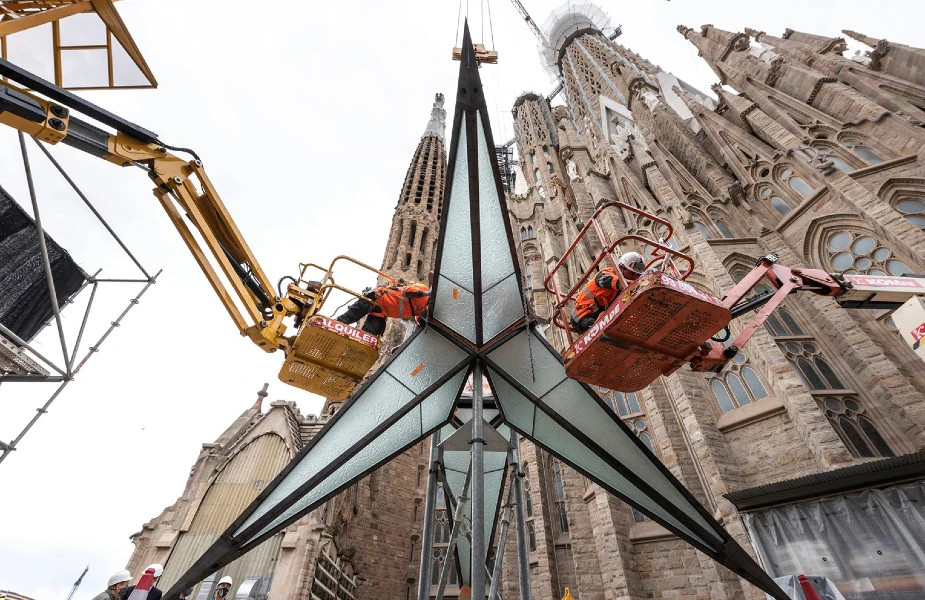
Curvilinear Forms
The basilica lacks straight lines and sharp angles. Gaudí preferred natural, flowing curves, such as those on leaves and branches, and considered stiff forms unnatural.
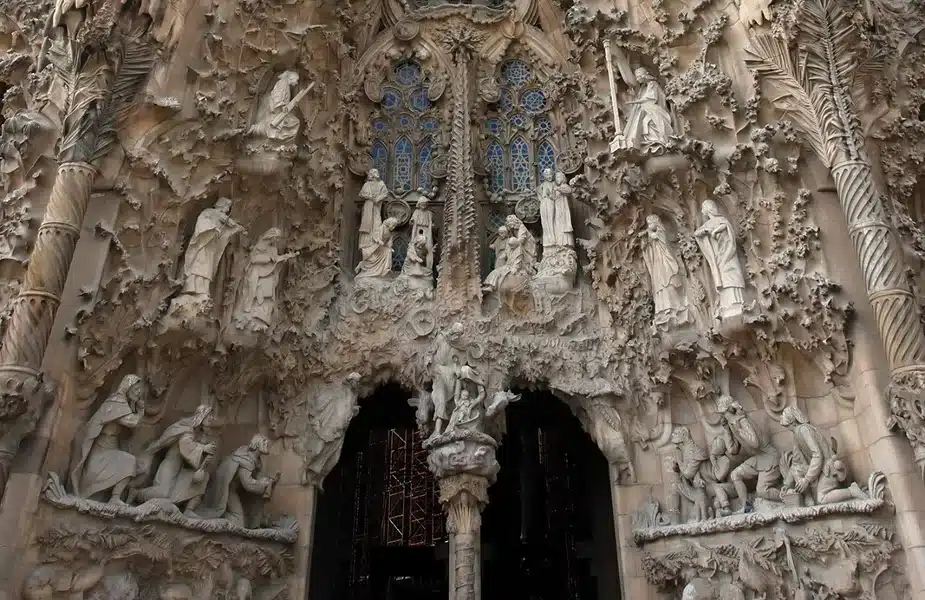
Columnar Forests
The internal columns resemble a forest of branching trees, with shape and color variations that mimic real trees.
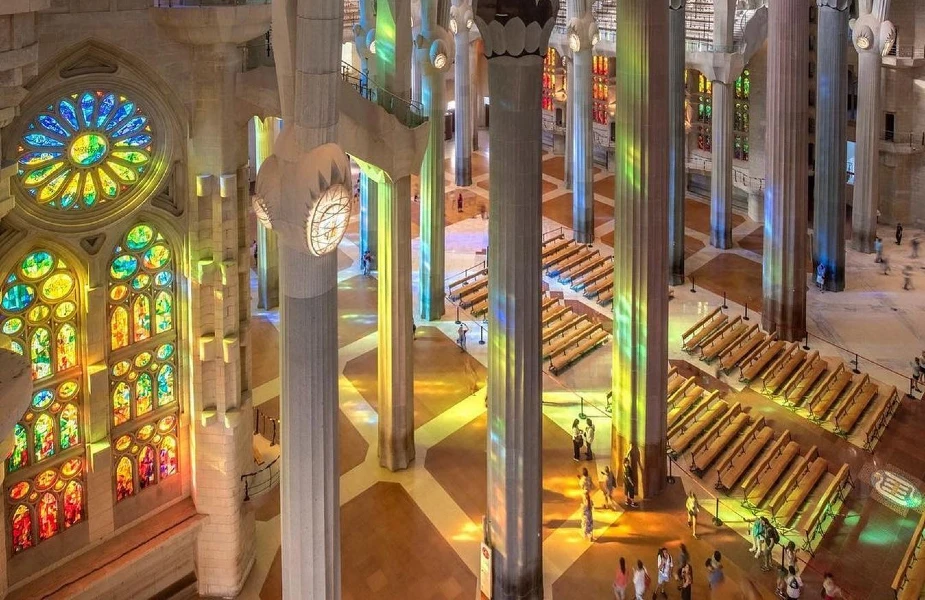
Luminous Stained Glass
The stained glass windows illuminate the space with a kaleidoscope of colors reminiscent of sunshine filtering through leaves. These windows feature religious subjects, adding to the basilica’s spiritual aura.
Symbolisms in Stones
The Sagrada Familia is more than just a spectacular architectural marvel. It’s a symbolic embodiment of faith.
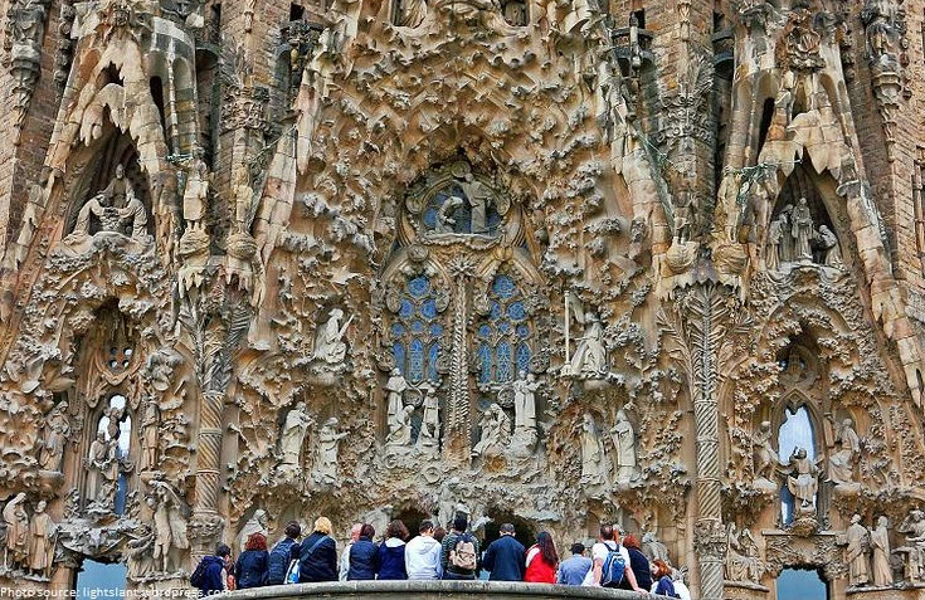
The Facades
They represent three stages of Jesus’ life: the Nativity Facade (birth), the Passion Facade (suffering), and the Glory Facade (resurrection and eternal life). Each facade’s exquisite carvings and embellishments tell a story about faith and sacrifice.
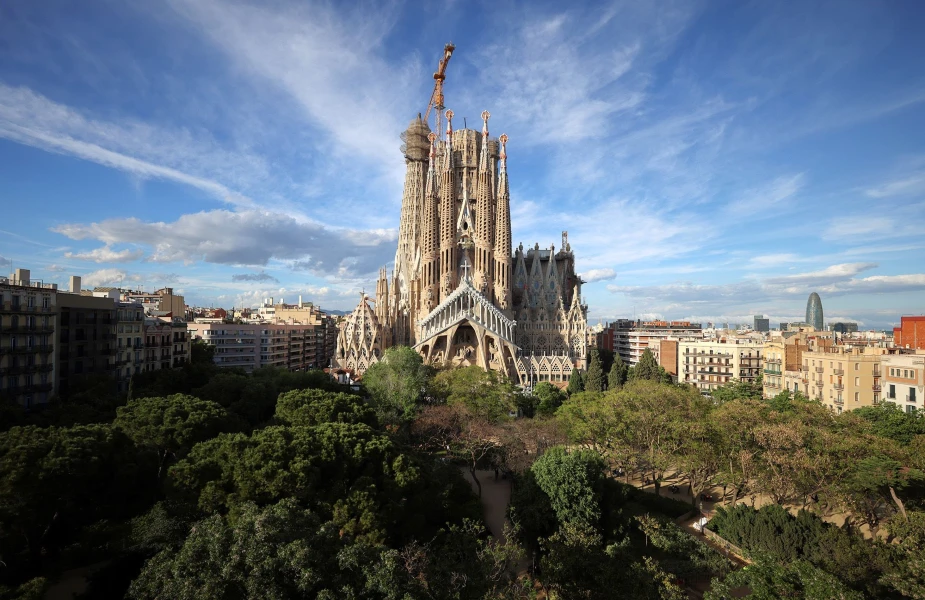
The Spire Forest
When completed, the Sagrada Familia will have 18 spires depicting the Twelve Apostles, the Four Evangelists, the Virgin Mary and Jesus Christ. Their different heights represent authority within the Christian religion.
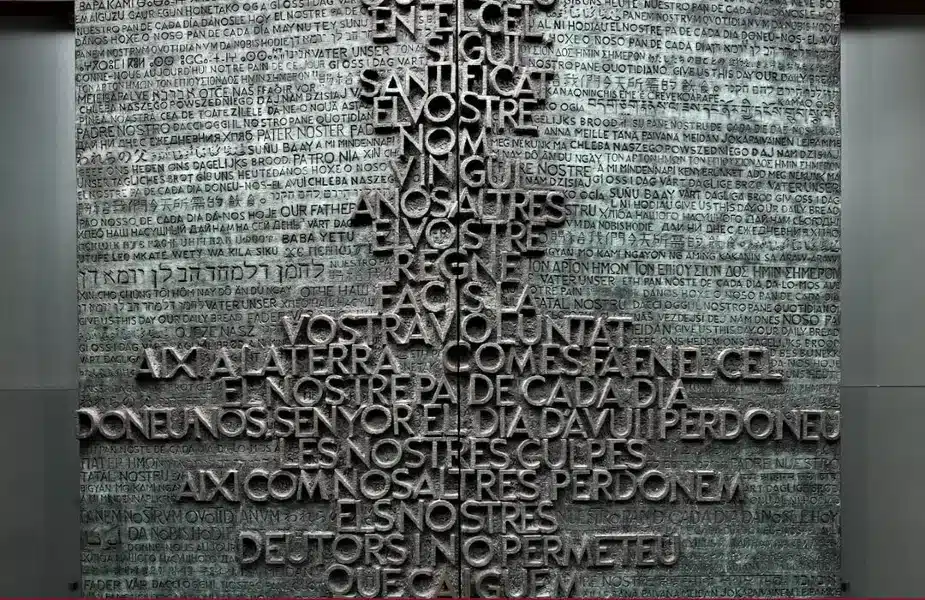
Hidden Messages
Gaudí inserted secret messages throughout the basilica. For example, the turtle and salamander sculptures on the front depict land and water, respectively, representing the earthy and spiritual realms.
Engineered Designs
Gaudí’s creativity exceeded aesthetics. He created unique structural solutions to sustain his bold design. Here are some noteworthy examples:
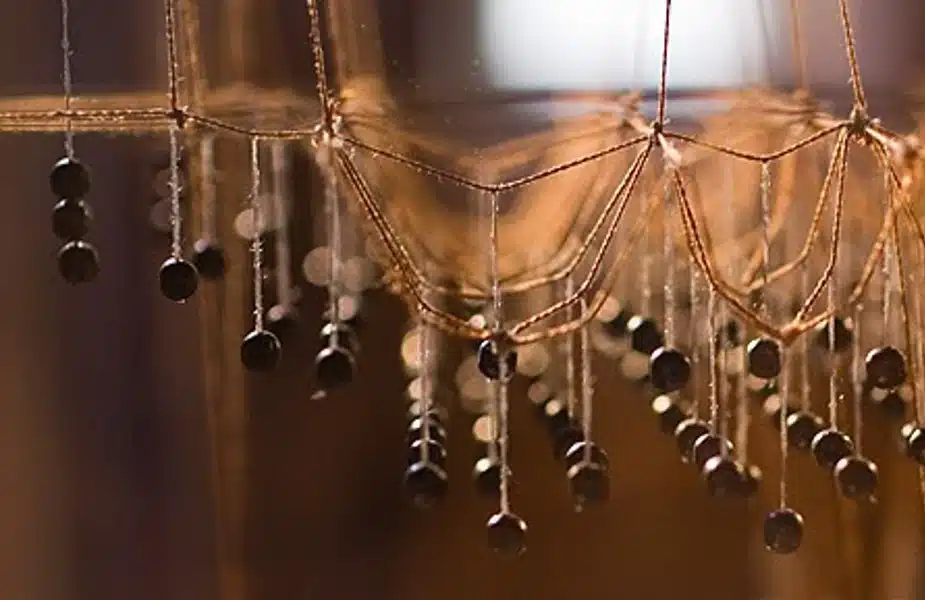
Inverted Model
Gaudí used an inverted model to find the best angles for the basilica’s columns and arches. This involved hanging weights from a maquette to simulate the forces occurring on the real building.
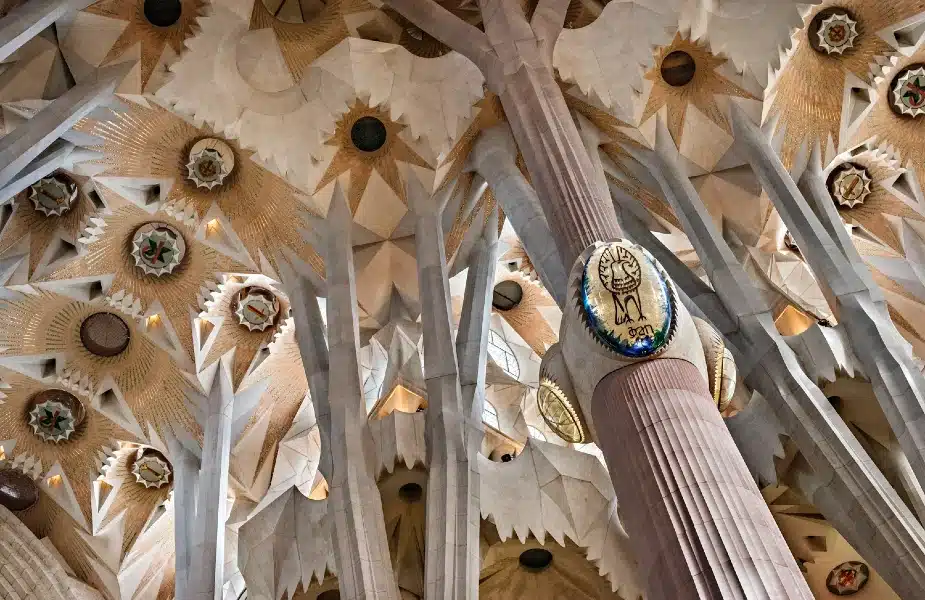
Hyperboloid Columns
These slender, branching columns, inspired by tree trunks, offer tremendous strength while remaining light and elegant.
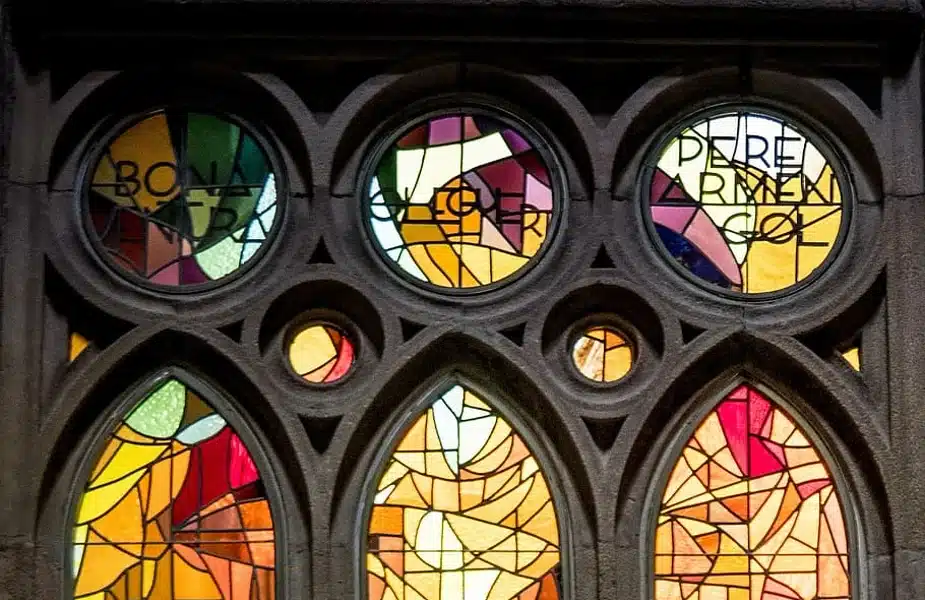
Stained Glass and Light
The colorful glass beautifies the interior and filters harsh sunlight, creating a diffused and spiritual environment.
FAQs
1. What is the role of stained glass in the Sagrada Familia’s design?
Stained glass serves two purposes at the Sagrada Familia.
- First, the brilliant colors and textures provide a mystical light on the inside, creating a spiritual environment.
- Second, the windows show religious scenes, which serve as a visual narrative to support the basilica’s symbolic architecture.
2. What inspired Antoni Gaudí in the design of the Sagrada Familia?
Antoni Gaudí’s design for the Sagrada Familia was inspired by nature’s forms like curving branches, tree-like columns and religious symbolism like depicting Jesus’ life and spires representing holy figures.
3. How many spires will the Sagrada Familia have when completed?
The Sagrada Familia will boast a total of 18 spires upon completion.
4. What architectural style does the Sagrada Familia belong to?
What architectural style does the Sagrada Familia belong to?
5. How are the interiors of the Sagrada Familia designed?
The Sagrada Familia’s interior is a jungle of branching columns that lead to the light-filled stained glass windows. The design is rich with symbolism, with motifs depicting saints, apostles, and many stages of Christ’s life.
Featured Image: Parametric-architecture.com




